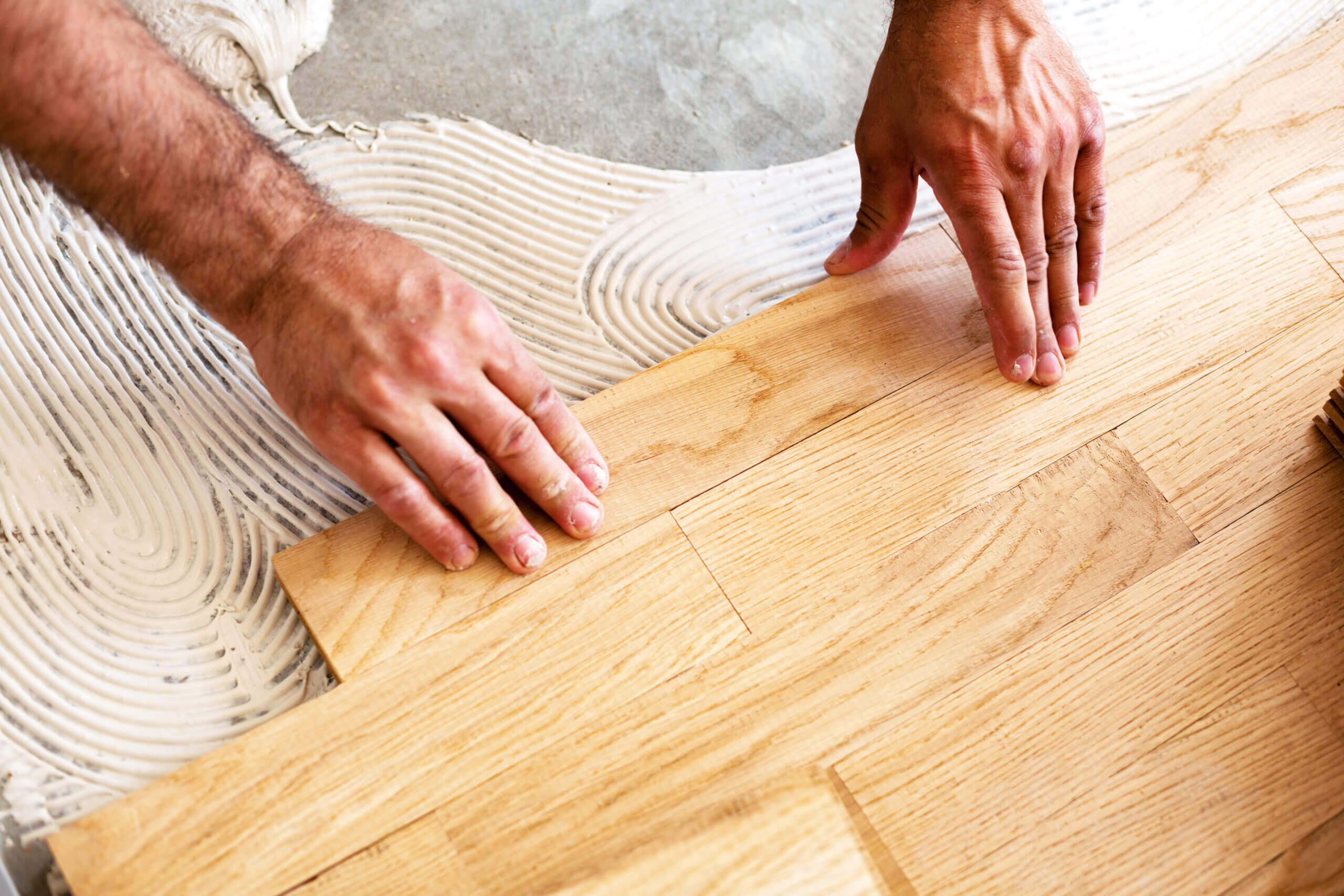Types of Flooring
The type of flooring you choose has a huge impact on your building. It determines use, durability, and upkeep needs.
Solid wood floors add value and character to your home and can be sanded and refinished for decades. Popular styles include maple, red oak, and walnut. For more information, just visit Flooring Fairfield NJ to proceed.

Porcelain tile outperforms other flooring materials for durability and scratch resistance in CR tests. It also resists dents from light objects like dropped utensils.
Whether your style is traditional, contemporary, or something in between, wood floors are a natural design element that can work with any decor and add value to your home. Durable and beautiful, hardwood can last a lifetime with proper care and maintenance.
Hardwoods come in a wide variety of shades and grain patterns. Domestic species like oak and maple are common, but walnut, cherry, and hickory offer unique colors and designs. Exotic tropical hardwoods can offer a dramatic look. Reclaimed wood and renewable bamboo also provide options for a distinctive appearance.
Woods can be finished in-house or purchased pre-finished. Finishes packed with aluminum oxides in a factory are tougher than those applied on-site and can be used in areas that may experience high humidity (such as a mudroom or laundry room).
A wood floor’s durability is rated by its Janka hardness rating. The higher the Janka score, the harder the wood and the more resistant to dents and scratches. Popular white oak has a Janka rating of 1,360, hickory is one of the hardest domestic hardwoods at 1820, and southern yellow pine is a soft wood with a Janka score of 870.
In addition to color and grain pattern, you can find hardwoods that are brushed for texture or rustic to replicate reclaimed flooring. You can select a mixed hardwood floor to add contrast and visual interest.
Wood is a warm material that absorbs heat and maintains a comfortable temperature in any room. It can even be paired with radiant heating systems to create an inviting and relaxing space all year round. Unlike synthetic materials, hardwood is also environmentally friendly. In time, it will also acquire subtle shadings and collect nicks, dents, and other marks that make the floor character impossible to reproduce on a synthetic surface.
Tile flooring is a broad category that includes any tough, flat, hard surface made of natural or synthetic materials and cut into uniform squares with gaps filled with grout. Modern manufacturing techniques have created a wide range of styles, colors, and materials for this type of flooring. Tile can be found in homes and public spaces all over the world.
Traditional ceramic tiles are crafted from clay that is fired at high temperatures. They’re durable, long-lasting, and come in various textures and finishes, making them suitable for many areas of the home. Ceramic tiles are also available in a water-resistant glazed form, making them ideal for bathrooms and other wet environments.
Porcelain tiles are ceramic tiles that are harder and denser than standard ceramic tiles. They can be glazed in various colors and have an attractive glossy sheen. These tiles are a good choice for high-traffic areas because they can withstand heavy foot traffic. Mosaic tiles are smaller and can be used to add an artistic element or create a pattern that will accent your floor.
Natural stone tiles are also a good choice for flooring. They are available in various textures and patterns, adding an elegant, distinctive look to your space. However, these tiles are more porous than other types of flooring, so they will require regular resealing to keep them looking their best.
Consider adding underfloor heating to your renovation plan if you install stone or ceramic tile floors. This is a great way to make your home more comfortable, especially when the weather turns cold.
Once considered “cheap” and “low-end,” vinyl has evolved into a flooring material that can compete with natural products in looks, durability, ease of installation, and affordability. Unlike hardwood, which requires a special underlayment to be installed, most vinyl is “floating,” allowing it to be loose-laid over almost any subfloor. It also handles moisture better than most other types of floor coverings.
Sheet vinyl (roto vinyl) comes in large rolls up to 12′ wide, meaning fewer seams to align. The product consists of an adhesive layer, a clear protective wear layer, and a pattern layer that can be printed in any desired design. The higher-quality varieties have an inlaid design layer that extends deep into the thickness of the flooring material.
Also referred to as luxury vinyl tile or LVT, this type of vinyl has an advanced manufacturing process that creates a flooring material that can look nearly identical to ceramic and stone tiles or natural wood floors. These vinyl products are available in tile and plank formats, with a range of timeless to trendy designs, and they can be installed as rigid or flexible vinyl.
A key difference between LVT and traditional vinyl is that LVT is water resistant, allowing it to be used in areas with high humidity, such as bathrooms and laundry rooms. However, the product can still swell if it absorbs much liquid, so it’s not a good basement choice. Always avoid detergents and abrasive cleaners regardless of which vinyl type you choose; the chemicals can damage the finish. Also, wipe up spills and splashes as quickly as possible to prevent stains.
When you want the look of traditional hardwood floors, stone, or even concrete but at a more affordable price, laminate flooring may be just what you’re looking for. Made of melamine resin and fiberboard materials, this type of flooring comes in several varieties to match your style. With a decorative layer printed to mimic a natural material on top of a durable core, this flooring is designed to resist moisture and indentations.
The base or core of each plank is a high-density fiberboard that can stand up against moisture and indentations. A protective back layer prevents stains and the formation of mold.
Over the core, a clear wear layer is applied to protect the image and decorative paper layers against water spills, sun fading, scratches, and dents. The floor is easy to clean, but avoid using detergent-based cleaners or wax products, as they can damage the surface. To maintain the beauty of your laminate, use a damp cloth or mop to remove dirt and dust regularly. You can also add a layer of protection by placing doormats at entrances to trap grit, dirt, and pet claws that could scratch the floor.
Laminate flooring is available in various colors, lengths, and widths. Choose broad planks and lighter shades to brighten a small space, or opt for textured or embossed finishes that add depth and make the floor look more realistic. Textured surfaces may show pet hair and dirt more easily and are not as easy to clean, but the nooks and crannies can create an attractive surface for your home. Unlike real wood, laminate cannot be sanded and refinished, so it must be replaced when worn.
Rubber flooring is typically a resilient material that offers water resistance and elasticity. It is often a good choice for areas with heavy use, such as garages or home gyms. It’s also well-suited to indoor playrooms for kids and can be a great choice in basements and laundry rooms. In addition to its pliable nature, it is easy to clean and maintain. Most rubberized options can be swept, vacuumed, and mopped with soapy water.
Rubber is derived from plant matter and decomposes over time, making it a more environmentally friendly flooring option than plastic. It can also be recycled, as in the case of reclaimed tires used to make this type of flooring. The earliest forms of natural rubber were made from Hevea brasiliensis trees as long ago as 1600 BC. Today’s rubber is synthetic, recycled from discarded car and truck tires, or vulcanized using heat and chemicals.
Another advantage of rubberized floors is that they are very thick and durable. Thickness helps to reduce noise and absorb shock. It is ideal for workout areas where people are constantly on their feet, as it helps to minimize foot fatigue and injuries from impact. It’s also a good choice for commercial areas with heavy equipment because it absorbs serious impacts.
In terms of appearance, rubber flooring comes in various textures and colors. Some styles have confetti-like color dots, while others are sleek and refined looking. It’s important to remember that although water resistant, this flooring may not be suitable for bathrooms with showers or tubs because the seams can allow moisture to penetrate.






